Why?
Evaluate the effectiveness/cost ratio of several battery brands. I have been doing photography and caving for several years now, and I have used a lot of rechargeable and non-rechargeable batteries on flash, LED lamp etc. I had a few questions:
- I observed that the batteries that worked so well on my headlamp were almost useless on my flash, so I wanted to investigate why.
- I used only cheap batteries because of their very low cost. Would it be cost-effective to buy better ones?
Methodology
I knew from various sources that rechargeable and non-rechargeable batteries have a very different-looking discharge curve, and that the “capacity” could vary greatly depending on the output. Therefore I measured the intensity of the current on my headlamp at medium power (around 200mA), which is equivalent to a resistance of 7.5 Ohm. I took the closest one I got at 5.6 Ohm:
| Voltage (V) | Current (mA) |
|---|---|
| 1.5 | 268 mA |
| 1.3 | 232 mA |
| 1.1 | 196 mA |
The current values are above 200mA, but this is not a problem since my headlamp is fairly low power, and I plan to get (or make) a more powerful one.
TLRD; I measured the discharge graph of batteries on a 5.6 Ohm load to roughly match the current used by my headlamps.
Results
Test Material
I used the previous project to get the discharge curves. I compared 6 different brands, and 2 Ni-Mh rechargeable batteries.
| Brand name | Price (eur) | Type |
|---|---|---|
| Amazon Basics | 0.40 | Alkaline |
| Carrefour Discount | 0.25 | Alkaline |
| Discount One (old) | 0.30 | Alkaline |
| IKEA Alkaline | 0.40 | Alkaline |
| Energizer Ultra+ | 1.18 | Alkaline |
| VARTA High Energy | 1.02 | Alkaline |
| Conrad | 3.70 | Ni-Mh 2500mAh |
Variability
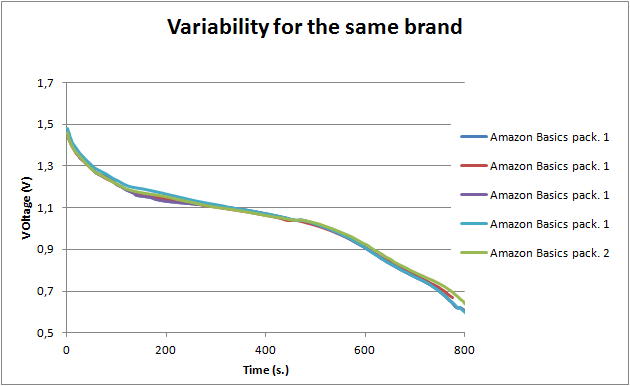
Evaluation of the variability of the discharge for the same brand
The first step is to ensure that the variability of measurements is not too high. If it was the case, the study would have to be made several times for every brand, which would be impractical. The measurements are made on 5 different Amazon essential batteries, from 2 different packages. The two packages were bought at the same time, so they a probably from the same batch. The results are very similar for all of them.
Discharge curves
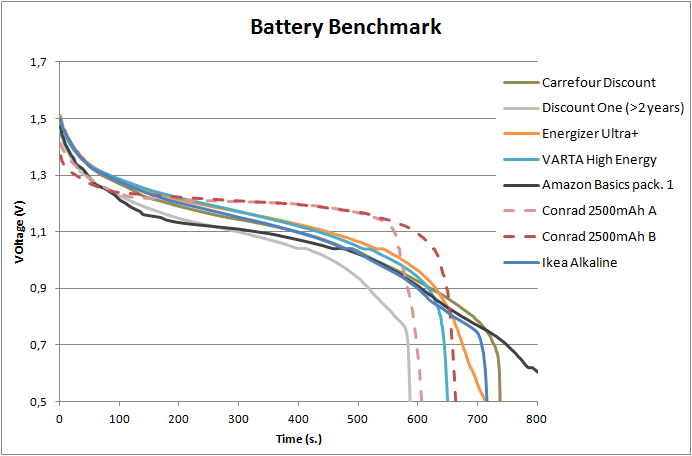
Benchmark result
Discharge time
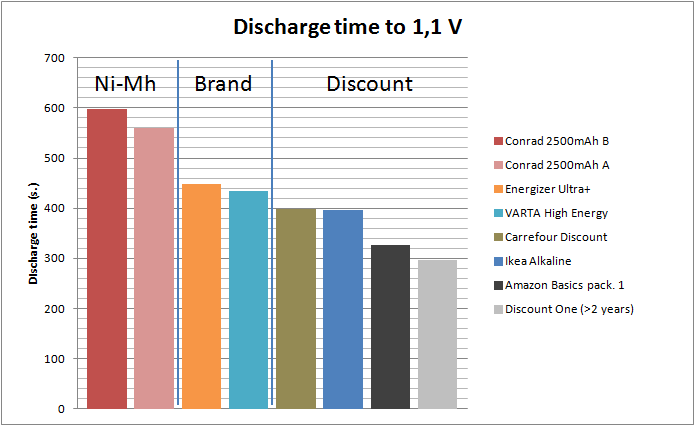
Discharge time to 1.1V
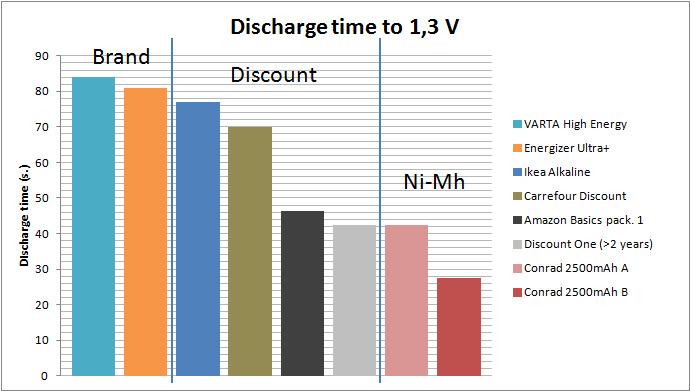
Discharge time to 1.3V
As usual, you get what you pay for. The branded batteries show better performances than the discounts. However, the difference is only in the range of a 5 to 20% improvement. The Carrefour Discount as well as the IKEA batteries are very good, on par with the brand ones. However, the other ones hold a significantly lower charge.
Discharge time corrected for price
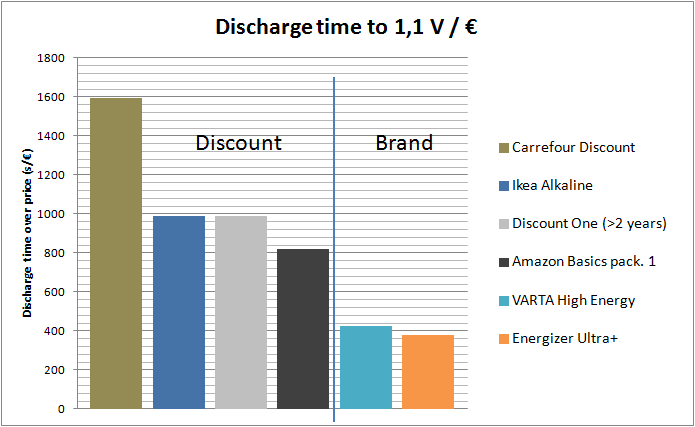
Discharge time to 1.1V, price corrected
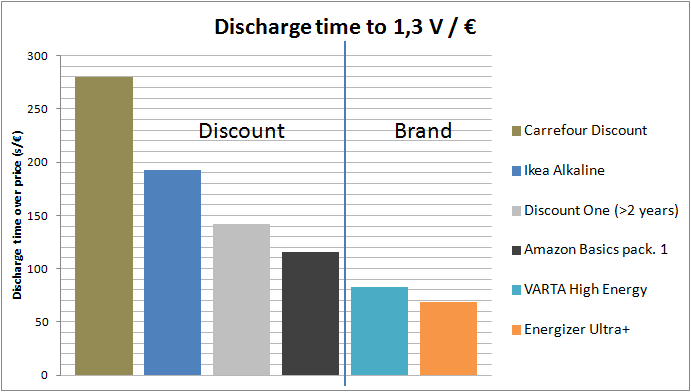
Discharge time to 1.3V, price corrected
You get what you pay for, right? Well, not really. Every increase in performance comes at a greater cost, and the batteries are no exception. The pricing difference is so large (>500%) that the small increase in performance is annihilated when you look at your wallet.
Conclusion
Those results are not unexpected. If you need the best batteries available, for a critical project, take the brand batteries. Well, if it is so important, you should even take li-ion non rechargeable batteries, which are supposed to last a lot longer (and cost a lot more, that’s why they aren’t in this test). For everything else, the cheaper ones are better.